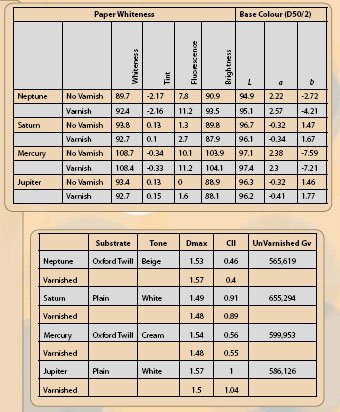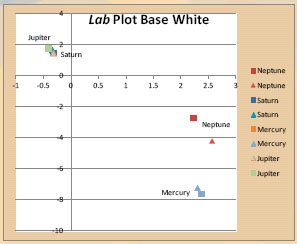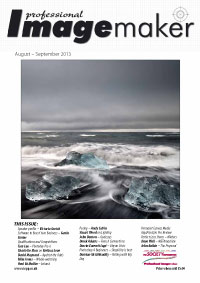articles/Paper/permajetsuite-page1
Paper Chase Permarjet Planet Suite A Grand Tour of the Celestial Bodies - part 1 of 1
by Mike McNamee Published 01/08/2013

Permajet rebranded and rationalised their canvas range when they introduced the new Mercury product. We investigated the original six-product range back in May 2008 and, while we welcomed the breadth of the range we expressed the view that some of them were rather too similar to make switching worthwhile. At least then, the rationalised range makes the choices simpler!
The rebranding has involved changing the names of the four retained canvasses on a planetary theme, so we have Mercury, Neptune, Saturn and Jupiter - very topical as Voyager leaves our solar system after a journey of some 35 years, having done the grand tour of the planets along the way.
Since we reviewed the canvasses in 2008 things have moved on. We now employ an Epson 4900 with its HDR ink set and we also have new measuring protocols. Both the gamut volumes and the Dmax are higher off the 4900. We also used the new (ish) PermaJet PermaPROtect varnish for these tests.

Base Tones
The base white of each canvas was measured before and then after varnishing. A single coat of gloss was applied, using a roller.
The media break out into three categories. Saturn and Jupiter are a natural cream base. Both have a plain warp and weft - Neptune and Mercury are Oxford Twill. Neptune is cool by a modest 4 Lab points, Mercury is much brighter and cooler. Both coatings contain OBAs. Saturn and Jupiter are OBA free and registered zero values for fluorescence.
The effect of varnishing was surprisingly slight. The Dmax values and gamut volumes are higher than in 2008 but they changed little after varnishing, some even went the 'wrong way'. The actual colour tone also varied very little after varnishing, this is for all practical purposes a 'neutral' varnish.
This is at odds with our findings when we tested Mercury just after its launch and suggests we made a thinner coating this time around. Normally we expect about 0.2 to 0.3 to be added to Dmax after varnishing.
One noteworthy measurement was the metamerism which was surprisingly low, between 0.4 and 1.04 (CII on 50% Grey).
The low ultimate density congregated the higher errors in the shadow regions of the gamut; visually they were blocked up below 30RGB points.
Even so all the media produced good looking prints and once again the varnish produced a clean, tough finish with none of the unpleasant plastic effect we have noted on other products. The decision on which to choose is entirely in the hands of the photographer. The Mercury stands out as it produces a noticeably brighter print, especially when direct comparisons are made. However, if you decide that OBAs are not for you then the two cream variants produce excellent prints - it is probably true that the average client is not going to notice the difference between any of the four options especially if viewed singly.
You are currently on page 1 Contact Mike McNamee
1st Published 01/08/2013
last update 09/12/2022 14:57:34
More Paper Articles
There are 16 days to get ready for The Society of Photographers Convention and Trade Show at The Novotel London West, Hammersmith ...
which starts on Wednesday 14th January 2026





